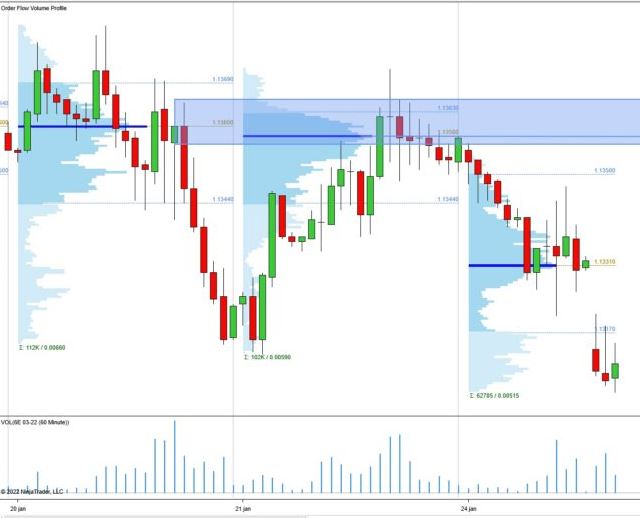There are few technical analysis types available when understanding the financial markets. Although order flow trading isn’t the Holy Grail of stock trading strategies, many trading professionals who work at significant hedge funds or prop traders swear by it.
Using order flow to trade will allow you to understand better why the price chart is going up or down. A price movement occurs when supply and demand are imbalanced. The trader is responsible for recognizing these imbalances.
You will learn how to identify price imbalances between the bid and ask prices as we progress through this order flow trading guide. As a first step, we’ll explain what order flow trading is and how it can benefit you.

What is order flow trading?
Order flow trading is analyzing the flow of trading orders and predicting future price movements based on their impact on price. A market participant order flow analysis can therefore indicate what other market participants are doing.
Order flow trading can also be called tape reading or order flow analysis. You can use order flow analysis to find out the final details about the volume of buying and selling. The candlestick chart shows you the market at a microscopic level. Each candlestick contains information about the order flow that can be analyzed.
How to trade order flow?
Additionally, the flow is a complementary trading method you can mix and match with any other. The price reasoning layer provides a layer that can be paired with factors such as momentum or fundamental reasoning standard deviation, allowing it to be applied as part of any analysis.
We can better understand how the order flow and strategies work with charts. Charts allow you to get a deeper understanding of the trading process. A map shows the general location of buyers and sellers.
Order flow trading does not use indicators. By looking at the trading charts representing horizontal levels, you can focus on analyzing the price action in a faster and more explicit manner.
Order Flow Trading Imbalances
Whenever the market takes a very aggressive approach, order flow imbalances occur.
In other words, when we see too much aggressiveness on the buy-side or sell-side, we see the aggressive initiative. An aggressive move will often result in the market topping out (bottoming).
A significant volume surge can create an order flow imbalance. You should follow these three rules when trading:
- By looking for continuation patterns, we trade in the direction of order flow imbalances.
- We then search for fillers to balance the imbalance if it doesn’t follow the trend.
- We look for a reversal if we can overcome the imbalance.

Bottom line
For a trading method, analysis, or plan to work, the trader must effectively use it to make money. Trading can be successful if you use the correct analysis and mentality. Order Flow, however, gives you a significant advantage when placing orders.
Trading methods, analyses, or plans can only be effective if an experienced trader employs them. Analysis and mentality are both essential to successful trading. Trade execution is improved when you use Trading Order Flow, however. Trading order flow involves buying and selling based on the recent bid and the market volumes. We can also view the timing of the executions with the order flow trading tools in addition to the buy and sell imbalances.


